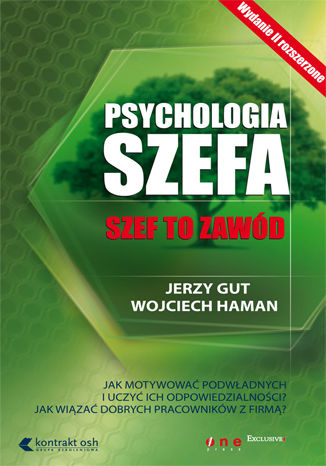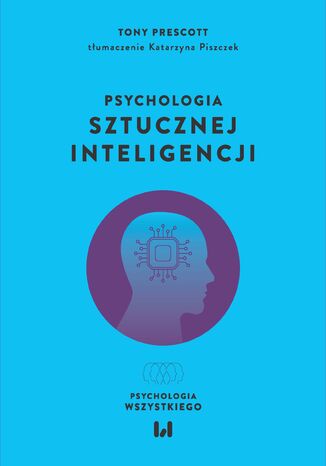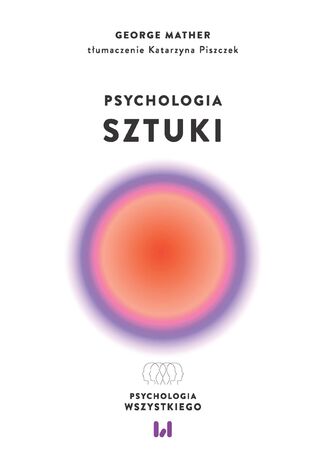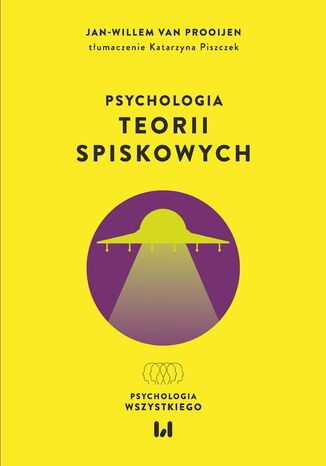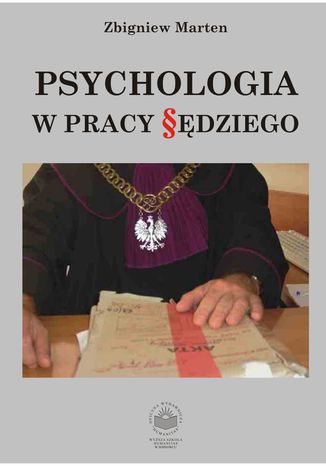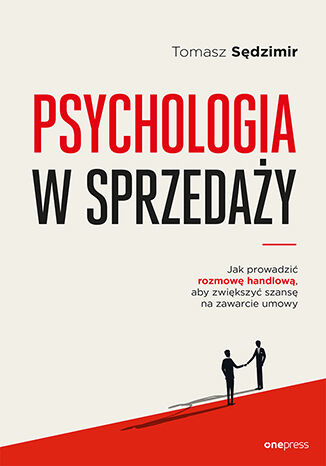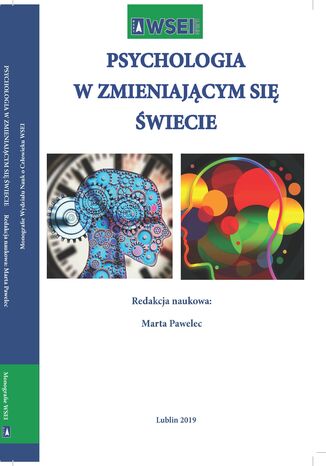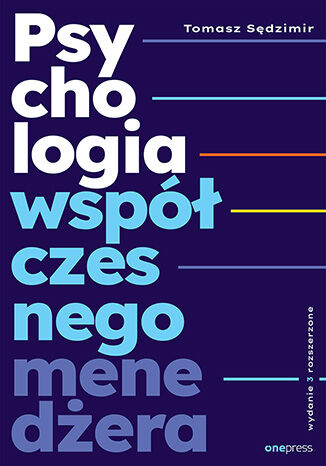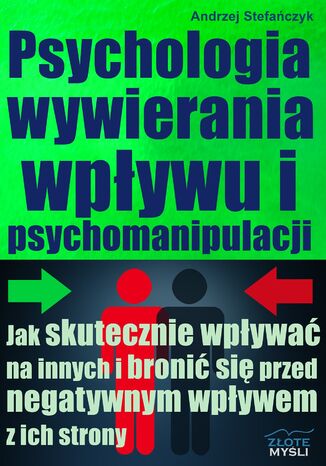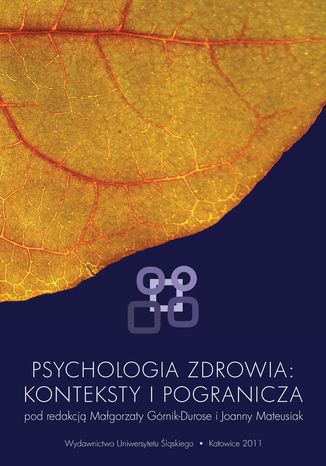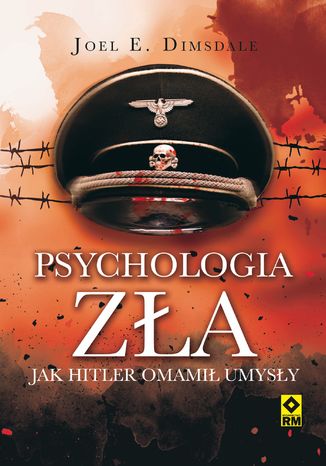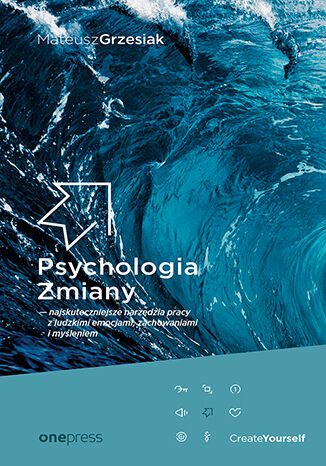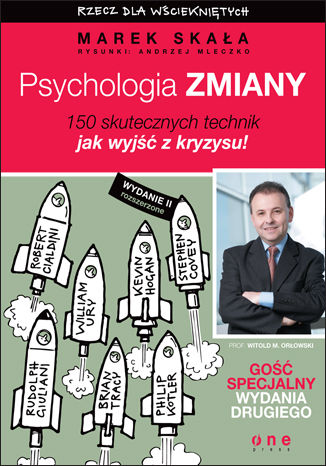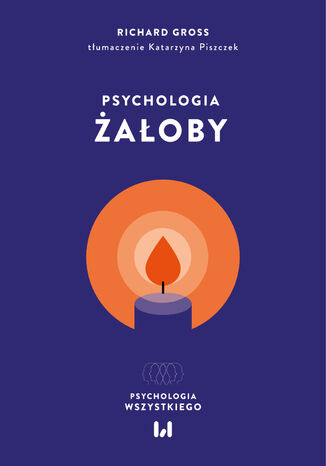Категорії
Електронні книги
-
Бізнес та економіка
- Біткойн
- Ділова жінка
- Коучинг
- Контроль
- Електронний бізнес
- Економіка
- Фінанси
- Фондова біржа та інвестиції
- Особисті компетенції
- Комп'ютер в офісі
- Комунікація та переговори
- Малий бізнес
- Маркетинг
- Мотивація
- Мультимедійне навчання
- Нерухомість
- Переконання та НЛП
- Податки
- Соціальна політика
- Порадники
- Презентації
- Лідерство
- Зв'язки з громадськістю
- Звіти, аналізи
- Секрет
- Соціальні засоби комунікації
- Продаж
- Стартап
- Ваша кар'єра
- Управління
- Управління проектами
- Людські ресурси (HR)
-
Для дітей
-
Для молоді
-
Освіта
-
Енциклопедії, словники
-
Електронна преса
- Architektura i wnętrza
- Безпека життєдіяльності
- Biznes i Ekonomia
- Будинок та сад
- Електронний бізнес
- Ekonomia i finanse
- Езотерика
- Фінанси
- Особисті фінанси
- Бізнес
- Фотографія
- Інформатика
- Відділ кадрів та оплата праці
- Для жінок
- Комп'ютери, Excel
- Бухгалтерія
- Культура та література
- Наукові та академічні
- Охорона навколишнього середовища
- Впливові
- Освіта
- Податки
- Подорожі
- Психологія
- Релігія
- Сільське господарство
- Ринок книг і преси
- Транспорт та спедиція
- Здоров'я та краса
-
Історія
-
Інформатика
- Офісні застосунки
- Бази даних
- Біоінформатика
- Бізнес ІТ
- CAD/CAM
- Digital Lifestyle
- DTP
- Електроніка
- Цифрова фотографія
- Комп'ютерна графіка
- Ігри
- Хакування
- Hardware
- IT w ekonomii
- Наукові пакети
- Шкільні підручники
- Основи комп'ютера
- Програмування
- Мобільне програмування
- Інтернет-сервери
- Комп'ютерні мережі
- Стартап
- Операційні системи
- Штучний інтелект
- Технологія для дітей
- Вебмайстерність
-
Інше
-
Іноземні мови
-
Культура та мистецтво
-
Шкільні читанки
-
Література
- Антології
- Балада
- Біографії та автобіографії
- Для дорослих
- Драми
- Журнали, щоденники, листи
- Епос, епопея
- Нарис
- Наукова фантастика та фантастика
- Фельєтони
- Художня література
- Гумор, сатира
- Інше
- Класичний
- Кримінальний роман
- Нехудожня література
- Художня література
- Mity i legendy
- Лауреати Нобелівської премії
- Новели
- Побутовий роман
- Okultyzm i magia
- Оповідання
- Спогади
- Подорожі
- Оповідна поезія
- Поезія
- Політика
- Науково-популярна
- Роман
- Історичний роман
- Проза
- Пригодницька
- Журналістика
- Роман-репортаж
- Romans i literatura obyczajowa
- Сенсація
- Трилер, жах
- Інтерв'ю та спогади
-
Природничі науки
-
Соціальні науки
-
Шкільні підручники
-
Науково-популярна та академічна
- Археологія
- Bibliotekoznawstwo
- Кінознавство / Теорія кіно
- Філологія
- Польська філологія
- Філософія
- Finanse i bankowość
- Географія
- Економіка
- Торгівля. Світова економіка
- Історія та археологія
- Історія мистецтва і архітектури
- Культурологія
- Мовознавство
- літературні студії
- Логістика
- Математика
- Ліки
- Гуманітарні науки
- Педагогіка
- Навчальні засоби
- Науково-популярна
- Інше
- Психологія
- Соціологія
- Театральні студії
- Богослов’я
- Економічні теорії та науки
- Transport i spedycja
- Фізичне виховання
- Zarządzanie i marketing
-
Порадники
-
Ігрові посібники
-
Професійні та спеціальні порадники
-
Юридична
- Безпека життєдіяльності
- Історія
- Дорожній кодекс. Водійські права
- Юридичні науки
- Охорона здоров'я
- Загальне, компендіум
- Академічні підручники
- Інше
- Закон про будівництво і житло
- Цивільне право
- Фінансове право
- Господарське право
- Господарське та комерційне право
- Кримінальний закон
- Кримінальне право. Кримінальні злочини. Кримінологія
- Міжнародне право
- Міжнародне та іноземне право
- Закон про охорону здоров'я
- Закон про освіту
- Податкове право
- Трудове право та законодавство про соціальне забезпечення
- Громадське, конституційне та адміністративне право
- Кодекс про шлюб і сім'ю
- Аграрне право
- Соціальне право, трудове право
- Законодавство Євросоюзу
- Промисловість
- Сільське господарство та захист навколишнього середовища
- Словники та енциклопедії
- Державні закупівлі
- Управління
-
Путівники та подорожі
- Африка
- Альбоми
- Південна Америка
- Центральна та Північна Америка
- Австралія, Нова Зеландія, Океанія
- Австрія
- Азії
- Балкани
- Близький Схід
- Болгарія
- Китай
- Хорватія
- Чеська Республіка
- Данія
- Єгипет
- Естонія
- Європа
- Франція
- Гори
- Греція
- Іспанія
- Нідерланди
- Ісландія
- Литва
- Латвія
- Mapy, Plany miast, Atlasy
- Мініпутівники
- Німеччина
- Норвегія
- Активні подорожі
- Польща
- Португалія
- Інше
- Przewodniki po hotelach i restauracjach
- Росія
- Румунія
- Словаччина
- Словенія
- Швейцарія
- Швеція
- Світ
- Туреччина
- Україна
- Угорщина
- Велика Британія
- Італія
-
Психологія
- Філософія життя
- Kompetencje psychospołeczne
- Міжособистісне спілкування
- Mindfulness
- Загальне
- Переконання та НЛП
- Академічна психологія
- Психологія душі та розуму
- Психологія праці
- Relacje i związki
- Батьківство та дитяча психологія
- Вирішення проблем
- Інтелектуальний розвиток
- Секрет
- Сексуальність
- Спокушання
- Зовнішній вигляд та імідж
- Філософія життя
-
Релігія
-
Спорт, фітнес, дієти
-
Техніка і механіка
Аудіокниги
-
Бізнес та економіка
- Біткойн
- Ділова жінка
- Коучинг
- Контроль
- Електронний бізнес
- Економіка
- Фінанси
- Фондова біржа та інвестиції
- Особисті компетенції
- Комунікація та переговори
- Малий бізнес
- Маркетинг
- Мотивація
- Нерухомість
- Переконання та НЛП
- Податки
- Соціальна політика
- Порадники
- Презентації
- Лідерство
- Зв'язки з громадськістю
- Секрет
- Соціальні засоби комунікації
- Продаж
- Стартап
- Ваша кар'єра
- Управління
- Управління проектами
- Людські ресурси (HR)
-
Для дітей
-
Для молоді
-
Освіта
-
Енциклопедії, словники
-
Електронна преса
-
Історія
-
Інформатика
-
Інше
-
Іноземні мови
-
Культура та мистецтво
-
Шкільні читанки
-
Література
- Антології
- Балада
- Біографії та автобіографії
- Для дорослих
- Драми
- Журнали, щоденники, листи
- Епос, епопея
- Нарис
- Наукова фантастика та фантастика
- Фельєтони
- Художня література
- Гумор, сатира
- Інше
- Класичний
- Кримінальний роман
- Нехудожня література
- Художня література
- Mity i legendy
- Лауреати Нобелівської премії
- Новели
- Побутовий роман
- Okultyzm i magia
- Оповідання
- Спогади
- Подорожі
- Поезія
- Політика
- Науково-популярна
- Роман
- Історичний роман
- Проза
- Пригодницька
- Журналістика
- Роман-репортаж
- Romans i literatura obyczajowa
- Сенсація
- Трилер, жах
- Інтерв'ю та спогади
-
Природничі науки
-
Соціальні науки
-
Науково-популярна та академічна
-
Порадники
-
Професійні та спеціальні порадники
-
Юридична
-
Путівники та подорожі
-
Психологія
- Філософія життя
- Міжособистісне спілкування
- Mindfulness
- Загальне
- Переконання та НЛП
- Академічна психологія
- Психологія душі та розуму
- Психологія праці
- Relacje i związki
- Батьківство та дитяча психологія
- Вирішення проблем
- Інтелектуальний розвиток
- Секрет
- Сексуальність
- Спокушання
- Зовнішній вигляд та імідж
- Філософія життя
-
Релігія
-
Спорт, фітнес, дієти
-
Техніка і механіка
Відеокурси
-
Бази даних
-
Big Data
-
Biznes, ekonomia i marketing
-
Кібербезпека
-
Data Science
-
DevOps
-
Для дітей
-
Електроніка
-
Графіка / Відео / CAX
-
Ігри
-
Microsoft Office
-
Інструменти розробки
-
Програмування
-
Особистісний розвиток
-
Комп'ютерні мережі
-
Операційні системи
-
Тестування програмного забезпечення
-
Мобільні пристрої
-
UX/UI
-
Веброзробка, Web development
-
Управління
Подкасти
Książka została zaklasyfikowana do TOP20 książek, które ukształtowały polskich liderów! Więcej w artykule Pulsu Biznesu. Ta książka nie jest teoretycznym ględzeniem, ani zbiorem pouczeń i przechwałek. Daje możliwość głębszej refleksji, ale jednocześnie pokazuje, jak można konkretnie działać, aby chronić specyficzne dla każdego szefa interesy i wartości. Psychologia szefa pomaga zrozumieć i zastosować zapomniane mechanizmy psychologiczne,ale z uwzględnieniem specyfiki polskich szefów i polskich podwładnych. Ta książka zawiera wiele konkretnych narzędzi, sposobów i bezpiecznych algorytmów działania, które pozwalają skutecznie i mądrze rozwiązywać najtrudniejsze sytuacje z podwładnymi. Jeżeli uznasz, że szef to zawód - możesz doskonalić swoje umiejętności menedżerskie, niezależnie od wieku, branży i doświadczeń. Drugie wydanie tej książki poszerzone jest o suplement, który odnosi się do aktualnego problemu większości szefów w Polsce: "Jak wiązać dobrego pracownika z firmą i budować jego prawdziwą lojalność?". Autorzy proponują rewolucyjne dla wielu decydentów pomysły i otwierają nową perspektywę w obszarze motywowania pracowników. A jeżeli to nie wystarczy - sprawdź, jak stanowczo można targować się z odchodzącym podwładnym. Wojciech Haman i Jerzy Gut są autorami również dwóch innych książek: Docenić konflikt i Handlowanie to gra, które od połowy lat dziewięćdziesiątych są cenione i wykorzystywane przez praktyków negocjacji oraz polecane na wielu wyższych uczelniach. Książka Psychologia szefa. Szef to zawód została już sprzedana w nakładzie kilkudziesięciu tysięcy egzemplarzy i wciąż może być inspiracją dla menedżerów oraz źródłem użytecznych rozwiązań w pracy z podwładnymi. To polska ewangelia mądrego szefa. Bez naukowego zadęcia Gut z Hamanem odpowiadają, jak sobie radzić w roli szefa. Nie mądrzą się, piszą normalnym językiem. Ich recepty są często oczywiste. Ale im bardziej oczywiste, tym trudniej o nich pamiętać. Warto. Stanisław Turnau Dyrektor Segmentu Prasa Codzienna i Internet. AGORA SA Wywiad z Wojciechem Hamanem >> Patron medialny:
Psychologia sztucznej inteligencji
PSYCHOLOGIA WSZYSTKIEGO Z jakiego powodu ludzie są zafascynowani psychologią i tym, co napędza ich do działania? Dlaczego myślimy i zachowujemy się w konkretny sposób? Pewnie mieliśmy okazję spotkać siedzących w fotelu psychologów twierdzących, że znają odpowiedzi na te pytania i ludzi, którzy zastanawiają się, czy psychologowie potrafią powiedzieć, o czym te osoby myślą. Psychologia Wszystkiego to seria książek obalających pseudonaukę i mity dotyczące najpoważniejszych życiowych pytań. Ta wciągająca, bogata w informacje i intrygująca seria odkrywa czynniki psychologiczne, które nami kierują, poczynając od podświadomych pragnień i awersji, a kończąc na naturalnych instynktach społecznych. Każda książka została napisana przez eksperta w danej dziedzinie sprawdzającego, jak wiedza oparta na badaniach wypada w porównaniu z mądrościami ludowymi i pokazującego, w jaki sposób psychologia może naprawdę ubogacić nasze rozumienie współczesnego życia. Przyglądając się poprzez psychologiczną soczewkę szerokiemu wachlarzowi bieżących tematów - takich jak seks, moda czy teorie spiskowe - Psychologia Wszystkiego sprawi, że spojrzysz na wszystko z nowej perspektywy. *** Czym jest sztuczna inteligencja (SI)? W jaki sposób oddziałuje na społeczeństwo? Czy ma większą moc niż inteligencja człowieka? Autor publikacji odkrywa wszystkie aspekty relacji łączących psychologię ze sztuczną inteligencją. Zastanawia się, w jakim stopniu SI przypomina ludzi i czy może posiadać jakąś formę samoświadomości. Poprzez analizę podobieństw między mózgami a komputerami prezentuje, w jaki sposób systemy SI zostały opracowane na wzór ludzkiej inteligencji. Omawia obecne ograniczenia związane z SI oraz metody ich przezwyciężania w przyszłości. Bada również niektóre z etycznych i społecznych zagrożeń, między innymi stronniczość algorytmów czy konsekwencje, jakich doświadczymy w przyszłości, jeśli w ważnych aspektach życia SI przewyższy człowieka. Z Psychologii sztucznej inteligencji dowiemy się, co tak naprawdę znaczy być człowiekiem oraz jak SI wpływa i będzie wpływać na ludzkość pod każdym względem. W SERII UKAZAŁY SIĘ: Psychologia sztuki, George Mather Psychologia prześladowań w szkole, Peter K. Smith Psychologia teorii spiskowych, Jan-Willem van Prooijen Psychologia diety, Jane Ogden Psychologia poradnictwa terapeutycznego, Marie Percival Psychologia żałoby, Richard Gross Psychologia ogrodnictwa, Harriet Gross Psychologia mózgu nastolatka, John Coleman Psychologia pamięci, Megan Sumeracki, Althea Need Kaminske
Dlaczego czerpiemy przyjemność ze sztuki? Co skłania nas do tworzenia dzieł artystycznych? Czy nauka o mózgu może być przydatna w zrozumieniu naszego zamiłowania do sztuki? Psychologia sztuki zapewnia eklektyczny wstęp do niezliczonych metod, dzięki którym psychologia może pomóc w pojmowaniu i docenieniu działalności twórczej. Odkrywając, w jaki sposób postrzegamy wszystko, co nas otacza, od koloru po ruch, prezentowana książka umożliwia przyjrzenie się tworzeniu sztuki jako formie ludzkiego zachowania, które czerpie z historii jako nieustannego źródła inspiracji, konfliktu i dyskusji. Ukazuje też, jak oszustwo, technologia reprodukcji i seksizm wpływają na naszą ocenę sztuki. George Mather - profesor psychologii na Uniwersytecie w Lincoln, w Zjednoczonym Królestwie. Jego główne zainteresowania badawcze obejmują postrzeganie ruchu, sztuki i iluzji wizualnych.
Kto wierzy w teorie spiskowe i dlaczego niektórzy ludzie są bardziej podatni na wiarę w nie niż inni? Jakie są konsekwencje tego typu przekonań? Czy jakakolwiek teoria spiskowa okazała się kiedykolwiek być prawdą? Psychologia teorii spiskowych obala mit, jakoby teorie spiskowe były zjawiskiem nowoczesnym poprzez zbadanie szerokiego kontekstu społecznego, w jakim powstają - od polityki po miejsce pracy. W książce tej autor wyjaśnia dlaczego niektórzy ludzie są bardziej podatni na wiarę w teorie spiskowe niż inni oraz jakie procesy psychologiczne, które możemy rozpoznać i przewidzieć leżą u podstaw powstawania tego typu przekonań. Poprzez przytoczenie przykładów takich jak zamachy terrorystyczne z 11 września i zmiana klimatu, Psychologia Teorii Spiskowych pokazuje, że, podczas gdy tego typu przekonania nie zawsze są nieuzasadnione i posiadanie ich nie jest cechą patologiczną, mogą również wyrządzać wiele szkód zarówno jednostkom jak i społeczeństwu.
(…) Publikacja składa się z dwóch części. W pierwszej autor omawia podstawowe kwestie teoretyczno-ekspertalne psychologii sądowej, w drugiej analizuje pracę sędziego w klasycznym modelu: człowiek w sytuacji pracy. Rozważania w części drugiej są poparte ćwiczeniami, na które składają się testy i kwestionariusze badające niektóre predyspozycje psychiczne oraz psychozabawy stworzone przez autora, które w lekkiej formie starają się przybliżyć tematy trudne (…).
Czy wiesz, jak zwiększyć swoje szanse na skuteczną sprzedaż? Dobry handlowiec to handlowiec skuteczny. Czyli taki, który doprowadza do odpowiednio dużej liczby rozmów z klientami zakończonych transakcją. Taki, który przynosi swojej firmie oczekiwane obroty. Taki, który jest zadowolony z comiesięcznej wypłaty, zwykle powiązanej ściśle z sukcesami w pracy. Decydując się na wybór tej ścieżki zawodowej, przyszły handlowiec zakłada, że będzie właśnie taki. Maksymalnie skuteczny. Jednak nie każdemu się to udaje. Dlaczego? Dzisiejsi klienci są bardzo różnorodni, mniej podatni na próby nieumiejętnej perswazji, bardziej powściągliwi w swoich decyzjach zakupowych. Podchodzą też z większym dystansem do osób, które próbują im coś sprzedać. Zwłaszcza do przedstawicieli handlowych i doradców, z którymi wcześniej nie mieli kontaktu. Żyjemy w dobie wyedukowanych i wymagających nabywców, surowo oceniających niekompetentnych sprzedawców. Aby odnaleźć się w obecnej sytuacji, odnosić sukcesy i z satysfakcją wykonywać ten ekscytujący, piękny, choć czasami trudny zawód, trzeba stale podnosić kwalifikacje. Szukać profesjonalnych sposobów docierania do nowych odbiorców usług i produktów, nabierać elastyczności w dopasowywaniu i przekonywaniu rozmaitych typów osobowości klienta, rozszerzać repertuar swoich umiejętności i tworzyć własny, niepowtarzalny styl sprzedaży. Odpowiedź na pytanie, jak to zrobić, znajdziesz w tej książce!
Psychologia w zmieniającym się świecie
Monografia daje interesujący obraz różnych podejść do problematyki zmian, jakim podlega współczesny świat, a także zmian zachodzących wewnątrz samej psychologii. Analizuje m.in. deklarowane wartości życiowe studentów psychologii, cechy osobowościowe oraz strategie konstruowania własnej przyszłości w okresie przełomu adolescencji i dorosłości, style przywiązywania oraz struktury emocjonalne związków dorosłych dzieci alkoholików (DDA) czy postawy wobec życia u młodzieży z rodzin dotkniętych eurosieroctwem. Publikacja przybliża związki psychologii i prawa w obszarze wpływu neuronauki na system sprawiedliwości, omawia ryzyko i skutki uzależnienia od gier hazardowych oraz zmiany w używaniu języka i społeczne konsekwencje tych zmian u użytkowników internetowych blogów i czatów. Monografia porusza problematykę uzależnień i zachowań problemowych młodzieży, a także prezentuje autorskie propozycje zmian w programach profilaktycznych realizowanych w środowisku szkolnym
Psychologia współczesnego menedżera. Wydanie 3 rozszerzone
Psychologia w służbie zarządzania Książka powstała z myślą o szefach, menedżerach, kierownikach zespołów ― osobach zarządzających aktywnością innych w firmach i organizacjach. Znajdziesz w niej niezbędną teorię, ale przede wszystkim praktykę: sprawdzone narzędzia służące usprawnieniu pracy z ludźmi i poprawie efektywności działań zespołów, czerpiące wprost z psychologii. Autor książki skupia się w niej głównie na zagadnienia związane ze sprawniejszą komunikacją w zespole, z motywacją i rozwojem potencjału pracowników. Zwraca także uwagę na takie kwestie jak doprowadzanie do zmian w postawach i nastawieniu do pracy poprzez metody stosowane w psychologii nurtów humanistycznego i poznawczo-behawioralnego. Odwołuje się przy tym do konkretnych przykładów z życia codziennego, opisując realne wyzwania, przed którymi stoją dziś menedżerowie.
W jaki sposób skutecznie wpływać na innych i bronić się przed negatywnym wpływem z ich strony? Zapewne zdajesz sobie sprawę z tego, że manipulacja jest obecna prawie wszędzie. Czy potrafisz jednak zachować się i reagować na nią odpowiednio? Wiesz, jak wykorzystać perswazję i wywieranie wpływu tak, aby pracowały dla Ciebie, a nie przeciwko Tobie? Co jest najlepszą obroną? Niektórzy twierdzą, że atak! I coś w tym jest, Twoim "atakiem" może być wiedza zawarta w tej książce. Sama świadomość jest potężną tarczą, która będzie chronić Ciebie i Twoje cele. Zobacz, czego nauczysz się dzięki tej publikacji: - Będziesz śmiać się z nieudolnej manipulacji innych ludzi mając świadomość wiedzy i praktycznych porad zawartych w tej książce. - Zrozumiesz, w jaki sposób można nakłonić innych do podjęcia lub zmiany jakiejś decyzji. - Zrozumiesz, w jaki sposób można wpływać na emocje innych ludzi skłaniając ich do określonego zachowania. - Zrozumiesz istotę komunikacji międzyludzkiej i wpływ poszczególnych jej składników na proces wywierania wpływu na innych ludzi. - Będziesz wiedział, w jaki sposób skutecznie obronić się przed manipulacją, tak, aby czuć się bezpiecznie. "Teraz dopiero widzę, ilu ludzi stara się nami manipulować w życiu. Warto zatem przeczytać tę publikację, daje to możliwość zrozumienia faktycznych ich intencji. Bardzo prosty i przyswajalny przekaz, praktycznie każdy jest w stanie zrozumieć jego zawartość." S. S.
Psychologia zdrowego rozsądku. Jak przystosować świat do siebie, a nie przystosowywać się do świata?
Czy zdrowego rozsądku można się nauczyć? Jeżeli Twoja odpowiedź zabrzmi NIE, to masz rację. Można jednak rozwijać ten styl myślenia, tak samo jak rozwijasz inteligencję. Być może rezerwujesz termin zdrowy rozsądek tylko i wyłącznie dla osób doświadczonych życiowo. Nic bardziej mylnego, zdrowy rozsadek to tak naprawdę styl myślenia i nie zależy on od wieku. Objawia się tym, że nie uczymy się tylko na swoich błędach, ale przede wszystkim na cudzych pomyłkach. Zdroworozsądkowe myślenie pozwala nam także czerpać z życia pełnymi garściami, gdy inni żyją na pół gwizdka. Witold Wójtowicz, jak sam deklaruje, swój życiowy sukces oparł właśnie na zdrowym rozsądku, a teraz dzieli się z Tobą spostrzeżeniami ze swojej podróży do celu. Tylko Ty możesz zadecydować, czy chcesz poznać filozofię, dzięki której: poznasz drogę do osiągnięcia takiego stanu umysłu, w którym problemy nie tylko nie będą stresowały, ale staną się wyzwaniem, osiągniesz równowagę pomiędzy pracą zawodową a życiem prywatnym, zrozumiesz, że Twoje życie niekoniecznie musi kojarzyć się z wiecznym stresem, poznasz sposoby na budowanie w sobie zdroworozsądkowego stylu myślenia, i co najważniejsze: zwiększysz skuteczność swoich działań w dowolnej dziedzinie swojego życia. Witold Wójtowicz jest autorem trzech bestsellerów, które część Czytelników określiło mianem rewolucyjne. Publikacja, którą trzymasz w ręku, jest jedną z nich. Witold Wójtowicz aktualnie podróżuje po świecie i cieszy się wolnością finansową. Jako mówca motywacyjny i nauczyciel zasad sukcesu, zapraszany jest na seminaria do wielu krajów świata, takich jak: Polska, USA, Czechy, Słowacja, Austria, Grecja, Białoruś, Australia. Krótko. Polecam. Dzięki tej książce naprawdę zrozumiałem, co to szczęście i je osiągnąłem. Może to i banał, ale mnie pomogła dzięki autorowi. Piotr Lehmann, pasjonat psychologii społecznej, ekonomista, obecnie gospodarka nieruchomościami Zdrowy rozsądek to podstawa wykorzystując wskazówki z tej książki, dopasujesz do siebie rzeczywistość i stworzysz nową jakość życia. Piotr Gibulski Jeżeli pragniesz dowiedzieć się, jak osiągnąć pełnię życia, stosując psychologię zdrowego rozsądku, znajdź czas i przeczytaj tę książkę, reszta to tylko kwestia czasu.
Psychologia zdrowia: konteksty i pogranicza
red. Małgorzata Górnik-Durose, Joanna Mateusiak
Ideą książki jest pokazanie szerokiej perspektywy usytuowania problematyki psychologii zdrowia w różnych kontekstach teoretycznych i aplikacyjnych oraz w powiązaniu z innymi dyscyplinami naukowymi. Ma ona stanowić rodzaj płaszczyzny dialogowej dla wymiany, konfrontacji i konsolidacji informacji, wzbogacających i precyzujących obszar badań i refleksji teoretycznej w ramach psychologii zdrowia. Monografia składa się z 14 rozdziałów, w których przedstawiciele różnych środowisk naukowych w Polsce prezentują zagadnienia wychodzące poza tradycyjny obszar dociekań w ramach psychologii zdrowia. Punktem odniesienia dla tych rozważań jest myślenie o zdrowiu w kategoriach biopsychospołecznych i w jego ramach poszukiwanie kontekstów teoretycznych i aplikacyjnych oraz obszarów pogranicznych, rzucających nowe światło na zakres i sposób zajmowania się zdrowiem z psychologicznej perspektywy. Tom podzielony został na trzy części, które odnoszą się kolejno do zagadnień teoretycznych, zagadnień związanych z pomiarem oraz zagadnień empirycznych. Zgromadzone w tym tomie prace mogą stać się istotnym przyczynkiem – z jednej strony – do poszerzenia obszarów penetracji w ramach psychologii zdrowia, a z drugiej – do dookreślenia jej miejsca pośród innych dziedzin wiedzy o człowieku, tworzących współcześnie złożony interdyscyplinarny system.
Psychologia zła. Jak Hitler omamił umysły
Psychologia zła zabiera czytelnika w trudną podróż, której celem jest zrozumienie zła w jego ekstremalnej postaci. Jeszcze przed zakończeniem drugiej wojny światowej psychiatrzy i psycholodzy podejmowali próby przybliżenia sposobu myślenia przywódców Trzeciej Rzeszy. Gdy bitewny kurz opadł i alianci przystąpili do osądzenia zbrodniarzy wojennych w międzynarodowym procesie w Norymberdze, psychiatra Douglas Kelley oraz psycholog Gustave Gilbert podjęli próbę zrozumienia sposobu postrzegania rzeczywistości przez nazistów. W tym celu posługiwali się m.in. wywiadami psychiatrycznymi i testami na inteligencję. Nigdy wcześniej ani później tak szczegółowemu badaniu nie poddano tak wielu zbrodniarzy, którzy doprowadzili do ludobójstwa na masową skalę. Autor książki korzysta ze swojego doświadczenia zdobytego podczas wielu lat praktyki naukowej w dziedzinie psychiatrii oraz postępów, jakie dokonały się w medycynie, psychologii i neurobiologii od czasu zakończenia drugiej wojny światowej. Jeszcze raz analizuje informacje pozyskane w Norymberdze, żeby z bliska przyjrzeć się czterem zbrodniarzom wojennym: Robertowi Leyowi, Hermannowi GOringowi, Juliusowi Streicherowi oraz Rudolfowi Hessowi. Prezentuje świeże spojrzenie na naturę zła i współczesne próby jego zrozumienia.
Psychologia zmian rozwojowych człowieka
Recenzowana praca o charakterze monograficznym jest pierwszą pozycją naukową o takim zakresie w polskiej literaturze psychologicznej. Pisana jest językiem ścisłym, jasnym, a zarazem naukowym. Jest bardzo dobrze udokumentowana źródłami naukowymi o charakterze konstytutywnym i to nie tylko z zakresu psychologii, ale także pedagogiki, socjologii, filozofii, medycyny itp. Tytuł pracy, jako że nowy, jest dobrze uzasadniony. Wielką zaletą opracowania jest centralistyczne, a nie peryferyjne podejście, zawiera zarazem wielotorowe wyjaśnienie podstawowych pojęć dotyczących omawianej problematyki. Definiowanie i syntetyczny opis opierają się na bardzo precyzyjnym języku, a także na solidnej dokumentacji bibliograficznej, bez często stosowanego we współczesnych opracowaniach bełkotu naukowego. Fragment z recenzji prof. zw. dr. hab. Stanisława Popka
Psychologia Zmiany - najskuteczniejsze narzędzia pracy z ludzkimi emocjami, zachowaniami i myśleniem
Najlepszymi, najskuteczniejszymi zawodnikami są ci, którzy potrafią sprawnie łączyć techniki charakterystyczne dla rozmaitych sztuk walki i korzystać z nich w zależności od potrzeb. Mateusz Grzesiak Czy wiesz, kim jest people helper? To ktoś, kto pomaga innym zmieniać ich myślenie. Czasem jest to wykształcony psycholog, certyfikowany terapeuta, trener umiejętności miękkich, medytujący buddysta, filozof zajmujący się mentoringiem, ksiądz zbliżający do Boga, motywujący swój zespół menedżer, wychowujący dziecko rodzic lub aktor sięgający do narzędzi psychodramy — zawodów zajmujących się psychologią zmiany jest wiele. Ale dla odbiorcy mniejsze znaczenie ma to, jak się nazywasz, bo liczy się dla niego rozwiązany problem i uzyskanie pomocy w osiąganiu celów. Najlepsi w tej dziedzinie mają zawsze arsenał skutecznych narzędzi pochodzących z różnych dyscyplin. Przegrywają za to ci, którzy ograniczają się do niewielu metod albo mają przestarzałe narzędzia — ten, co ma młotek, wszędzie widzi gwoździe. Wygrywają ci, którzy czerpią z wielu szkół pracy z umysłem człowieka. Spotkanie autorskie z Mateuszem Grzesiakiem w warszawskim Empiku W książce tej znajdziesz najskuteczniejsze techniki pracy z innymi. Psychologia zmiany stanowi kompilację najważniejszych narzędzi wykorzystywanych w coachingu, terapii, mentoringu i consultingu. Opanowanie wiedzy i umiejętności z jej zakresu pozwala pomagać sobie i innym ludziom diagnozować ich problemy, rozwiązywać je, wykorzeniać negatywne zachowania, motywować, podnosić potencjał służący realizacji zamierzeń, zmieniać przekonania. Jeśli chcesz się tego nauczyć, ta książka jest dla Ciebie.
Psychologia zmiany. Rzecz dla wściekniętych. Wydanie II rozszerzone
150 skutecznych technik jak wyjść z kryzysu! Gość specjalny II wydania: prof. Witold M. Orłowski Ile potrwa światowy kryzys gospodarczy, tego nie wiemy. Potrzebujemy jednak wskazówek, jak go przetrwać. Na szybkie odbicie się od dna nie możemy liczyć, stagnacja sporo potrwa. Dlatego drugie wydanie zostało uzupełnione o rozdział kryzysowy. Pierwsze wydanie tej książki ukazało się niemal na rok przed kryzysem. Zawierało ponad 150 technik, za pomocą których można zbudować lub poprawić dobre relacje - jak się okazuje, najważniejszą rzecz w kryzysie. Efekt tej książki nie znajduje się jednak na jej stronach - ten efekt jest w nas. Już WIESZ, co robić i jak robić. To jednak za mało. Należy jeszcze TO ZROBIĆ. Każda ze 150 technik coś daje, zmniejsza skutki kryzysu, pozwala go unikać w jakimś obszarze, daje wręcz szansę na sukces. "Gratuluję postępów w pracy nad książką. Nie mogę się doczekać jej publikacji. Przesyłam Ci wprowadzenie, które możesz zamieścić. Powodzenia w pisaniu." Bob Cialdini "Marek - TA KSIĄŻKA TO WSPANIAŁA IDEA - i dziękuję, że umieściłeś mnie w tak wspaniałym towarzystwie." Kevin Hogan "W zarządzaniu ludźmi najważniejsze jest motywowanie - do lepszej pracy, rozwoju, zmiany. I wszystko to jest w tej książce. Dobra idea - techniki z najwyższej półki - podane są prosto, do zastosowania od zaraz. Osobisty udział największych światowych autorytetów biznesu - Cialdiniego, Hogana, Ury'ego - obok znakomitych komentarzy Andrzeja Mleczki daje tej książce dodatkowe atuty. Chce się ją czytać, dobrze się czyta i warto ją czytać." Katarzyna Niezgoda "Żywy język, przystępna forma, liczne praktyczne przykłady. Do tego dowcipne, niekonwencjonalne puenty. To idealna lektura dla osób, które pragną być skuteczne oraz odnosić sukcesy zarówno w biznesie, jak i życiu prywatnym." Igor Chalupec "Książka ta jest nowym zjawiskiem w naszej literaturze biznesowej z dwóch co najmniej powodów. Pierwszy to znakomita równowaga między słowem i obrazem - ożywiająca pozycja, która uczy, bawiąc. Drugi to równowaga między mnóstwem sugestii dla praktyków i sporą dawką rzetelnej, pogłębionej refleksji o relacjach między ludźmi. Autor upraszcza, nie spłycając, daje trafne przykłady, wyjaśniając jednoznacznie opisywane idee, reguły i zasady. Lektura dla wszystkich! Książka świetnie smakuje dzięki osobistemu podejściu autora, bezpretensjonalnej opowieści o spotkaniach z wieloma znakomitymi osobistościami świata społecznego, ludźmi pokazywanymi w ujmujący, bezpośredni sposób. Przybliżając autorów, przybliża ich idee." prof. dr hab. Zbigniew Nęcki Patroni medialni:
Co dzieje się w naszej sferze emocjonalnej, kiedy opłakujemy bliską osobę? Czy istnieje "właściwy" sposób przeżywania żałoby? Jak wpływa ona na to, jak postrzegamy samych siebie? Psychologia żałoby zawiera humanistyczne wyjaśnienie tego zjawiska, podkreślające szeroką gamę naszych reakcji na śmierć bliskiej osoby. W książce opisano również, w jaki sposób badacze poszukiwali odpowiedzi na pytania dotyczące tego doświadczenia. Począwszy od pionierskiej psychoanalizy Freuda, a skończywszy na dyskredytowanych twierdzeniach, że powinniśmy przejść przez poszczególne "etapy" żałoby, odkryjemy społeczne i kulturowe normy tworzące lub ograniczające nasze rozumienie procesu żałoby oraz przyjrzymy się językowi, jakiego używamy do jej opisywania. Każdy w którymś momencie życia doświadcza bolesnej straty. Psychologia żałoby pomoże Czytelnikom zrozumieć zarówno swoje uczucia, jak i uczucia innych osób związane z żałobą. Richard Gross pracuje w Cruse Bereavement Care, największej brytyjskiej organizacji oferującej wsparcie w okresie żałoby. Książki o tematyce psychologicznej publikuje od ponad trzydziestu lat.

